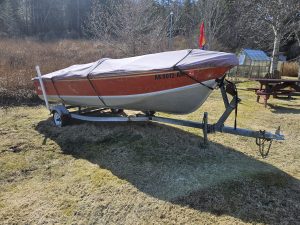Local Conditions
Airport Conditions | Current Winds (Windy) | Precipitation Tracker | Avalanche Forecast | Takshanuk Mtns Station | Mt Ripinsky Station | AK Satellite
NWS Forecasts | SEAK Forecasts | Weather Underground Haines Page | Weather.com HNS 10 Day | Weather.com JNU 10 Day | Snow and Avalanche
Marine
NOAA Zone Forecast |
Eldred Rock Report |
Marine Forecast |
Tides
Roads
Haines Pass Weather | Wells Bridge, Klehini (Chilkat) |
Yukon HWY |
Yukon Weather
Webcams
Weather Cams | APT Regional Tower Cams
Space
Aurora Forecast
For detailed happenings at the Library, please refer to http://haineslibrary.org
For the school calendar, please refer to http://www.hbsd.net
Alaska News from Alaska Dispatch
- Tesla’s first-quarter profit tumbles 55% amid falling global sales and price cutsby Tom Krisher and David Hamilton, Associated Press on April 23, 2024
A Tesla charging station is seen, Sept. 28, 2023, in Woodstock, Ga. (AP Photo/Mike Stewart, File) […]
- OPINION: Ending toxic threats to Alaska from plastics and petrochemicalsby Rosemary Ahtuangaruak and Vi Pangunnaaq Waghiyi on April 23, 2024
A gas flare burns near Prudhoe Bay's Lisburne Production Center on Friday, May 22, 2015. (Loren […]
- OPINION: Alaska’s constitution provides constraints on education fundingby Jahna Lindemuth on April 23, 2024
Alaska Gov. Mike Dunleavy answered questions during a press conference in Anchorage on Wednesday, […]
- OPINION: Solutions for Alaska's nurse shortageby Shannon Davenport and Jane Erickson on April 23, 2024
iStock / Getty Images (sudok1/)The recent column by the Anchorage Daily News editorial board on the […]
- Another fiber network break causes widespread internet and cell outage in Arctic Alaskaby Alena Naiden on April 23, 2024
Residents in several northern Alaska communities experienced cell and internet service disruptions […]
Full news:
Google Search

Lutak Lumber
“See it in a home improvement book at the library? We’ll help you build it.”
Open Monday through Saturday
Closed Sundays.

 6 DAILY FLIGHTS BETWEEN HAINES AND JUNEAUIFR capable, All-Turbine Wheeled FleetDaily connections to Skagway and the rest of SE AlaskaFreight Service - Charter Flights907-766-3800 - Online 24/7 atwww.flyalaskaseaplanes.com
6 DAILY FLIGHTS BETWEEN HAINES AND JUNEAUIFR capable, All-Turbine Wheeled FleetDaily connections to Skagway and the rest of SE AlaskaFreight Service - Charter Flights907-766-3800 - Online 24/7 atwww.flyalaskaseaplanes.com
Call us at 907-789-3127
 Available Now. Details at Heatherlende.com
Available Now. Details at Heatherlende.com Don’t Get Scammed
If you are browsing a website and get a message telling you that you have a virus and to call the number to resolve: Don’t call the number!
If you get an email indicating that you have been billed for a renewal or purchase and instructing you to call the number if you have questions: Don’t call the number!
Don’t click links in emails. Instead, go to the website (email, bank, etc.) and login there to see if there is a message for you.
Haines Bloggers
Let us know if we forgot anyone…
Reduce. Reuse. Recycle
Come by the Recycle Center during staffed hours of Th/Fr 9-12 or Sat 10-2 or drop off recycling any time.
All recycling tips and the entire ROW document is available on the Haines Friends of Recycling webpage at https://www.hainesrecycle.org
Chilkat Valley Community Foundation Quick Link

Latest Classifieds
- Get vaccinated
- Get tested if symptomatic
- Wash hands regularly
- Wear a mask when necessary

"Once you learn to read, you will be forever free."
Frederick Douglass
In a fall 2012 survey, Haines Borough residents were asked to rank public services in order of importance to the community. The results are: 1. Fire, Ambulance, and Police 2. K-12 education 3. The Haines Borough Public Library.
The same survey asked residents to rate all borough services. The Haines Borough Public Library topped the chart, with a 95% approval rating.

"A library is more than a brick and mortar building filled with delicious books. It is also a community of people who live to invest in our youth, who read for knowledge and fun, and who are ready to include anyone who walks through the door."
![]()


















